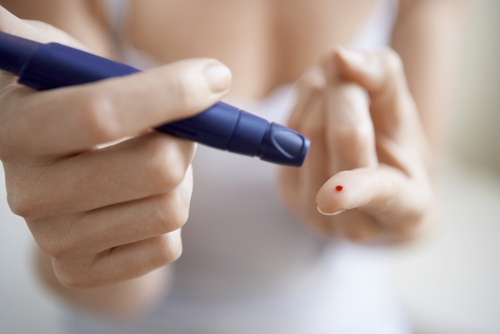My name is Marta. I’m 25 and I am a type 1 diabetic.
In this new blog series called My Type 1 Diabetes Journey, I will be sharing my own experiences in dealing with the disease on a day-to-day basis, but also insights into the latest advances in technology that can help every diabetic lead a more regular, consistent lifestyle. These posts aim to be an open one-on-one conversation supported by facts, firsthand experience, personal thoughts and scientific data. I intend to bring new topics about diabetes to light and challenge your mindset about the disease. So feel free to ask questions and suggest topics to me that you would like to see discussed in later posts. After all, this blog is intended to be a conversation between myself and you, the reader.
Being “one of them”
I found out I was a diabetic at the age 11. After suffering from some unusual pains in my feet during my usual swimming practice, my coach soon recommended that I do some routine blood tests just to make sure that everything was ok. Then, there it was — my oral glucose tolerance test (OGTT) results showing glycemia levels going up to 500mg/dL. I guess that many diabetics can understand my shock, based on this amazingly high value. In case you are not a diabetic, you should know that baseline values to be considered diabetic are 126 mg/dL.
This result was honestly a surprise for me at that time, especially because despite being a child and not having a clue about what diabetes was, I was also not able to identify any of the usual symptoms of Type 1 diabetes, which include:
- Urinating often
- Feeling very thirsty
- Feeling very hungry — even though you are eating
- Extreme fatigue
- Blurry vision
- Cuts/bruises that are slow to heal
- Weight loss — even though you are eating more (type 1)
- Tingling, pain, or numbness in the hands/feet (type 2)
Fitting in
- Hb A1C – Hemoglobin A 1 C or Glycosylated Hemoglobin corresponds to the number of glycosis molecules that the red blood cells have been transporting in the bloodstream. It is possible to analyze this parameter through blood samples and calculating an average for the past 2 to 3 months.
- Insulin – is the biological hormone that allows the glycosis molecules to enter the cells. It works as a catalyzer, enabling our body cells to access energy molecules. Insulin is produced in the Pancreas and then released in the blood stream.
-
Plasma Glucose Test – This is a 5 second test that diabetics have to take more than once per day in order to help them control and track the values of glucose in the bloodstream. Keeping a close track of this helps doctors adjust the set of treatments.
- Auto-immune disease – Type 1 Diabetes is considered an auto-immune pathology because it is known to be caused when the immune system of the patient attacks the pancreas’ beta cells, the ones responsible for production of insulin. The reason why this happens is still not completely understood.
I was soon flooded with all the special care I had to take responsibility for myself, and to this day, it is still an ongoing adjustment for me. However, while this blog post doesn’t represent the beginning of my Type 1 Diabetes journey, it does mark the beginning of my journey to chronicle my own experiences and connect them with the experiences of others who are living with the disease as well. Because diabetes is a disease that those of us must live with and manage on a daily basis, sharing tips for achieving the most active, healthy and independent lifestyle is important for all of us.
I look forward to us taking this journey together!


